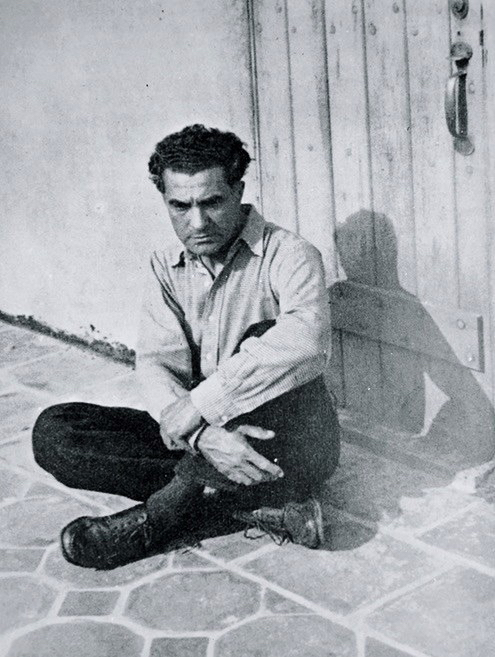Edgar Varese au Nouveau Mexique
Varèse composed only for himself, but who can blame him for being obsessed with the insults hurled at him and feeling the need to prove himself at every turn? The first performance of Déserts at the Théâtre des Champs-Elysées in Paris in 1954 was a tragic blow to him. Nevertheless, despite the magnitude of that scandal, it was only one in a long series of disappointments that had dogged his life. And it is a lesson in understanding Varèse. He belonged to no one, no country, culture, school, or trend. His legacy belongs to the world. Any assessment of his music and influence based on national and stylistic considerations does him a disservice. — Chou Wen-chung
Varèse's first work with electronic sound was Déserts (1949–54), whose title the composer intended to connote «not only physical deserts of sand, sea, mountains and snow, outer space, deserted city streets, but also this distant inner space...where man is alone in a world of mystery and essential solitude.» The atmosphere is strikingly different from that of Amériques, which was all about the discovery and conquest of new worlds, and indeed the music is strikingly different from what had been in Varèse's mind 30 years before: thrust and havoc give way to a generally slow, subdued, interior landscape. The «essential solitude,» implicitly melancholy, is surely the composer's own. He had spent two long periods in New Mexico in 1936–37, and had completed nothing
that satisfied him since Density 21.5 just before. He may have had in his mind, too, the technologically enabled disasters of the Second World War. Déserts is a continuous orchestral movement broken by three [optional] «interpolations» composed from factory noises and the sounds of percussion instruments. Varèse collected these with his own Ampex tape recorder, in 1953, and though they provide windows onto a new musical world, the outlook is of a piece with the work's beautifully maneuvered bleakness. The ensemble is similar to that of Intégrales, with flutes and clarinets in pairs, ten brass, piano and percussion group. lts use, however, is quite different. Though ejaculatory motifs still occur, they lack propulsive energy and remain subsidiary to sustained chords or single tones, whose orchestration is highly sophisticated. Pitched percussion — principally the piano, but also vibraphone, glockenspiel, xylophone, and tubular bells — are used almost always to double the wind in a subtle assembling and dismantling of sonorities, while the role of the unpitched percussion, paramount in Hyperprism and Ionisation, is considerably curtailed. The work was completed in Paris, where the composer finalized the tape at the French Radio's musique concrète studio (though he was to work on it again in New York in 1960–61). The first performance was conducted by Hermann Scherchen in Paris on December 2, 1954, when this was the first music broadcast by French radio in stereo. — Paul Griffiths
